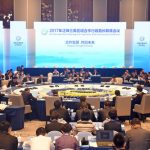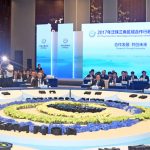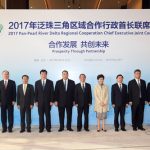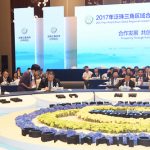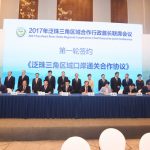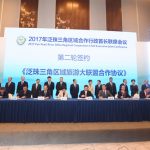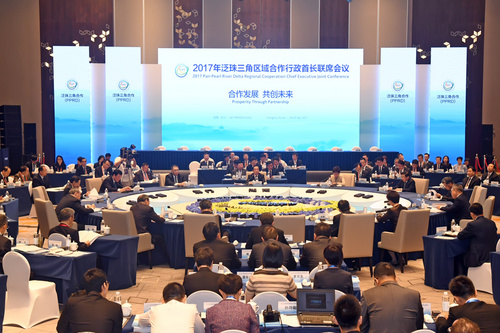 The Chief Executive, Mr Chui Sai On, attends the 2017 Pan-Pearl River Delta Regional Cooperation Chief Executives Joint Conference held held in Changsha Prefecture, Hunan Province.
The Chief Executive, Mr Chui Sai On, attends the 2017 Pan-Pearl River Delta Regional Cooperation Chief Executives Joint Conference held held in Changsha Prefecture, Hunan Province.
Macao is looking forward to extending partnership with the “9+2” provinces and regions that make up the Pan-Pearl River Delta (PPRD), while making use of the city’s distinct advantages to serve the region’s development needs.
The Chief Executive, Mr Chui Sai On, made the remarks today as he delivered a speech at the 2017 Pan-Pearl River Delta Regional Cooperation Chief Executive Joint Conference, held in Changsha Prefecture, Hunan Province.
Macao would play a more active role in regional cooperation; the development of the city cluster in the Guangdong-Hong Kong-Macao Greater Bay Area; and the Silk Road Economic Belt and the 21st-Century Maritime Silk Road (collectively known as the “Belt and Road” initiative), said Mr Chui.
The Joint Conference is a platform – launched in 2004 – for regional cooperation between the nine provinces and two Special Administrative Regions (SARs) – collectively known as the “9+2” – that are located in the Pan-Pearl River Delta region. They are: Fujian; Jiangxi; Hunan; Guangdong; Guangxi; Hainan; Sichuan; Guizhou; Yunnan; the Hong Kong SAR; and the Macao SAR.
During the meeting, Mr Chui said the Macao Government would dedicate more effort to build upon Macao’s inherent advantages, so as to make further contributions to the development of the Greater Bay Area.
In this regard, the Government would step up efforts to:
1) enhance Macao’s strategic position as a world centre of tourism and leisure, in particular advancing the city as a hub for training tourism professionals;
2) assist places in the Greater Bay Area and those in the PPRD region to explore business opportunities in Portuguese-speaking countries regarding financial services, economic matters and trade; and advance Macao’s role as a commercial and trade cooperationservice platform between China and Portuguese-speaking countries; and
3) reinforce the development of a hub in Macao for exchanges and cooperation on Chinese culture, making use of Macao’s multicultural tradition and environment.
The “Framework Agreement on Deepening Guangdong–Hong Kong–Macao Cooperation in the Development of the Bay Area” – signed in July – outlined clear paths for such work.
Mr Chui said the plan of building the Greater Bay Area was an innovative and significant strategy, and evidence of the further complementary cooperation within the PPRD region and that could ultimately be integrated within the “Belt and Road” initiative.
The Chief Executive stated the city had already made active contributions to the “Belt and Road” initiative via Macao’s advantages in language, culture, and its extensive network ofreturned overseasChinese, as well as its close ties with Portuguese-speaking countries.
Mr Chui also mentioned that large-scale events held in Macao – such as the Ministerial Meeting of theForum for Economic and Trade Cooperation between China and Portuguese-speaking Countries – had also provided a platform to foster closer ties between PPRD partners and Portuguese-speaking countries.
The Government had organised a tour – due to take place in the first half of next year – enabling a delegation from the PPRD to visit Portuguese-speaking countries, he added.
Macao would join hands with PPRD governments in pushing forward the development of: tourism; work regarding innovation and technology; the transformation of urban areas into smart cities; use of electronic commerce and online-based government services; computer-guided transport; technology-based tourism services; and healthcare services.
After today’s meeting, all the Joint Conference members signed two cooperation agreements covering, respectively, matters concerning checkpoint clearance and the formulation of a tourism federation. The members also issued a summary of the meeting.
After arriving in Changsha on Sunday, Mr Chui had respective meetings with the Secretary of the Communist Party of China (CPC) of Hunan Province, Mr Du Jiahao; the Governor of Fujian Province, Mr Yu Weiguo; and the Governor of Jiangxi Province, Mr Liu Qi.
View gallery

